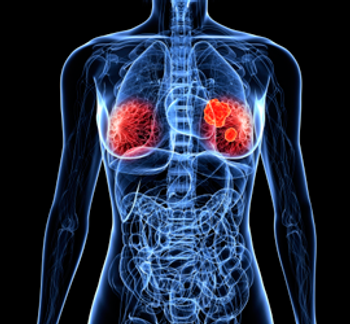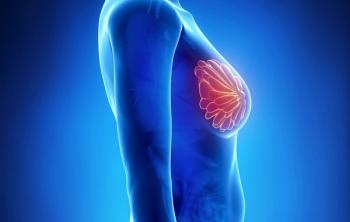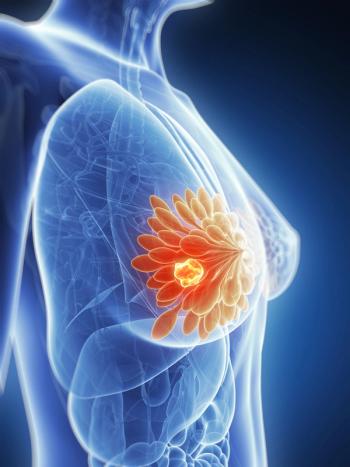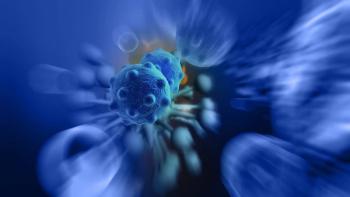
Induction Ibrutinib/Rituximab Plus R-HCVAD Yields Positive Frontline Activity in Mantle Cell Lymphoma
Research from a 2-part, phase 2 trial found that ibrutinib and rituximab followed by hyper-fractionated cyclophosphamide, vincristine, doxorubicin, and dexamethasone produced positive response data and a manageable safety profile for younger patients with mantle cell lymphoma.
Frontline induction treatment with ibrutinib (Imbruvica) and rituximab (Rituxan) followed by rituximab plus hyper-fractionated cyclophosphamide, vincristine, doxorubicin, and dexamethasone (R-HCVAD) for young patients with mantle cell lymphoma (MCL) showed promising clinical activity and maintained a tolerable safety profile, according to results from the phase 2 WINDOW-1 trial (NCT02427620) published in Lancet Oncology.
Part A of the trial showed that patients (n = 131) had an overall response rate (ORR) of 98% (95% CI, 95%-100%), which included a complete response (CR) rate of 87% (95% CI, 80%-92%) and a partial response (PR) rate of 11% (95% CI, 7%-18%).
“A chemotherapyfree ibrutinib-rituximab induction followed by short course of consolidative chemotherapy with RHCVAD and methotrexate-cytarabine is a feasible and active frontline treatment option for young patients with mantle cell lymphoma,” the investigators wrote.
Eligibility for this single center, singlearm trial required patients to be aged 65 years or younger and with a serum bilirubin of less than 1.5 mg/dL, creatinine clearance of 30 mL/min or more, an ECOG performance status of 2 or less, and cardiac ejection fraction of 50% or more.
Part A was the induction portion of the trial in which patients received a combination of ibrutinib at 560 mg orally given daily with rituximab at 375 mg/m2 intravenously once weekly during the first 28-day cycle, then given on day 1 of cycles 3 through 12 thereafter. Induction was administered for 12 cycles or until complete response, response plateau, disease progression, unacceptable toxicity, or consent withdrawal.
Part B included shortcourse RHCVAD, which included intravenous treatment with rituximab at 375 mg/m2 on day 1, cyclophosphamide at 300 mg/m2 every 12 hours for 6 doses on days 2 to 4, mesna (Mesnex) at 600 mg/m2 24 h continuous infusion on days 2 and 3, vincristine at 1.4 mg/m2 on day 5, doxorubicin 50 mg/m2 per day 1 day after last dose of cyclophosphamide, and oral or intravenous dexamethasone at 40 mg on days 1 to 4.
ORR after Part A, defined as CRs or PRs, was the primary end point of the study. Secondary end points included progressionfree survival (PFS), overall survival (OS), CR, duration of response, and toxicities in both parts.
The study enrolled patients with a median age of 56 years between June 12, 2015, and December 6, 2018. Most patients in the study population were male (79%), White (92%), and all but 1 patient had an ECOG performance status of 1 or less (99%). Thirty-one percent of patients had low-risk disease, 33% had intermediate-risk disease, and 36% had high-risk disease measured via biological MIPI score.
For part A, the 16-week ORR was 89% (95% CI, 83%-94%) with a CR rate of 14% (95% CI, 8%-21%). The median time to CR was 5 months, and response rates were similar between high-risk and low-risk patients.
In part B, the best ORR was 90% (95% CI, 84%-95%), which included a CR rate of 89% (95% CI, 83%-94%) and a PR rate of 1.0% (95% CI, 0.2%-4.2%). A CR by investigator assessment was observed in 99% of evaluable patients.
Both median PFS and median OS were not reached after a median follow-up of 42 months. Three-year PFS and 3-year OS rates were 79% (95% CI, 70%-85%) and 95% (95% CI, 89%-98%), respectively. The median duration of response was also not reached.
Most adverse effects (AEs) observed in the WINDOW-1 trial were grade 1 or 2. The most common grade 3/4 hematological AE in part A was lymphocytopenia, which was seen in 14% of patients. Common grade 3/4 nonhematological AEs included skin rash (12%), infections (8%), and fatigue (8%).
In part B, common grade 3/4 hematological AEs were lymphocytopenia (73%), leukocytopenia (32%), thrombocytopenia (30%), neutropenia (20%), and anemia (17%). Common grade 3/4 non-hematological AEs included fatigue (19%), elevated liver enzymes (11%), and myalgia (9%).
“Randomised studies comparing standard chemoimmunotherapy with BTK inhibitorbased therapies will establish the efficacy and safety of these approaches in patients with mantle cell lymphoma,” the investigators concluded.
Reference
Wang ML, Jain P, Zhao S, et al. Ibrutinib-rituximab followed by R-HCVAD as frontline treatment for young patients (≤65 years) with mantle cell lymphoma (WINDOW-1): a single-arm, phase 2 trial. Lancet Oncol. Published online January 21, 2022. doi:10.1016/S1470-2045(21)00638-0
Newsletter
Stay up to date on recent advances in the multidisciplinary approach to cancer.





















































































